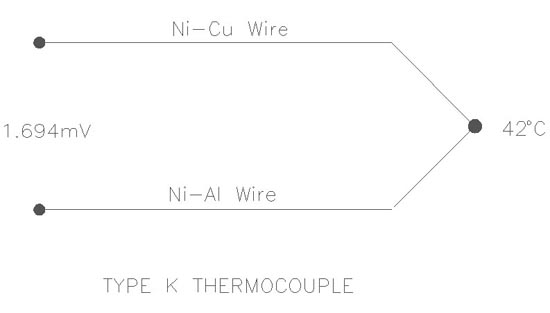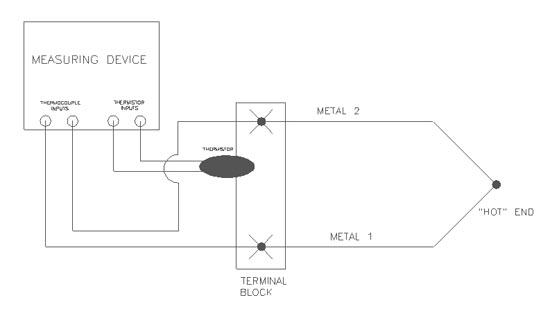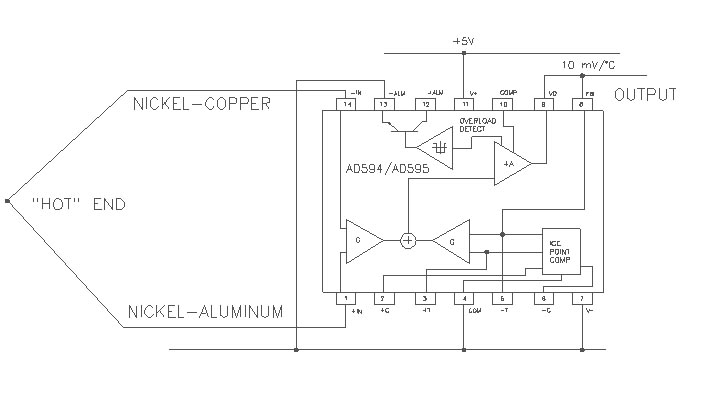USING YOUR THERMOCOUPLE
Cold Junction Compensation
In the figure shown below we have one of the more common (type K) thermocouples, and it’s corresponding voltage at 42°C as retrieved from the NIST website.

However, it is not possible to simply connect a voltmeter to the thermocouple to measure the voltage produced. Since the leads on the voltmeter are most likely of a dissimilar metal (usually copper) from the thermocouple wires we would introduce two undesired junctions, known as a parasitic thermocouples. This is where the Law of Intermediate Metals comes into play. This law states that a third metal inserted between two dissimilar metals of a thermocouple junction will have no effect, as long as the junctions are isothermal (the same temperature). All standard tables compensate for this inaccuracy by assuming that this second junction (the “cold” end) is kept at 0°C (32°F). In a laboratory setting this can be easily achieved through the use of an ice bath as shown below.

This is generally the best method of measurement, as a properly maintained ice bath can usually offer an accuracy of 32°C ±0.2°C, not to mention the fact this is the most inexpensive of available methods.
Real World Applications
For most real world applications, constantly maintaining an ice bath is either not possible or not practical. As such, when presented with a non-standard cold section temperature, many technicians may instead opt for temperature measuring devices which may be more costly and less suited for the intended application. This mistake can be avoided with a little more knowledge of the thermocouple and it’s related circuitry.
For applications where knowing the exact temperature is extremely critical, cold junction temperature can be measured through the use of a precision thermistor in contact with the terminal block, or the input connectors of the measuring instrument. This reading is added to the EMF reading from the thermocouple, and is used by the measuring instrument to find the absolute temperature at the hot end of the thermocouple. The down side to this is that this method either requires sophisticated (and usually expensive) measuring equipment, or requires the designer to program software to do the addition of the two readings. The advantage of this method is that accuracies of ±0.5°C are possible.

For applications where this extremely high degree of accuracy is not required, off the shelf IC’s are readily available from many suppliers. One such example is the AD594/AD595 from Analog Devices, which come with built in cold junction compensation. These IC’s are often desirable because they eliminate the need to record two temperatures, require little to no software, and are far simpler to implement. With the IC’s listed above accuracies of ±1°C/±3°C respectively are possible. The required circuitry is usually provided in the accompanying literature at the time of purchase. One example circuit is given below.

Again, “cold junction compensation” is only necessary if you need to know the absolute temperature of the system you are monitoring. Thermocouples produce a voltage which is the proportional to the difference between the hot and cold junctions. So if you simply need to monitor the change in temperature of a process, “cold junction compensation” is unnecessary. But as you can see from above, there are many methods available of finding absolute temperature depending on the degree of accuracy required.
